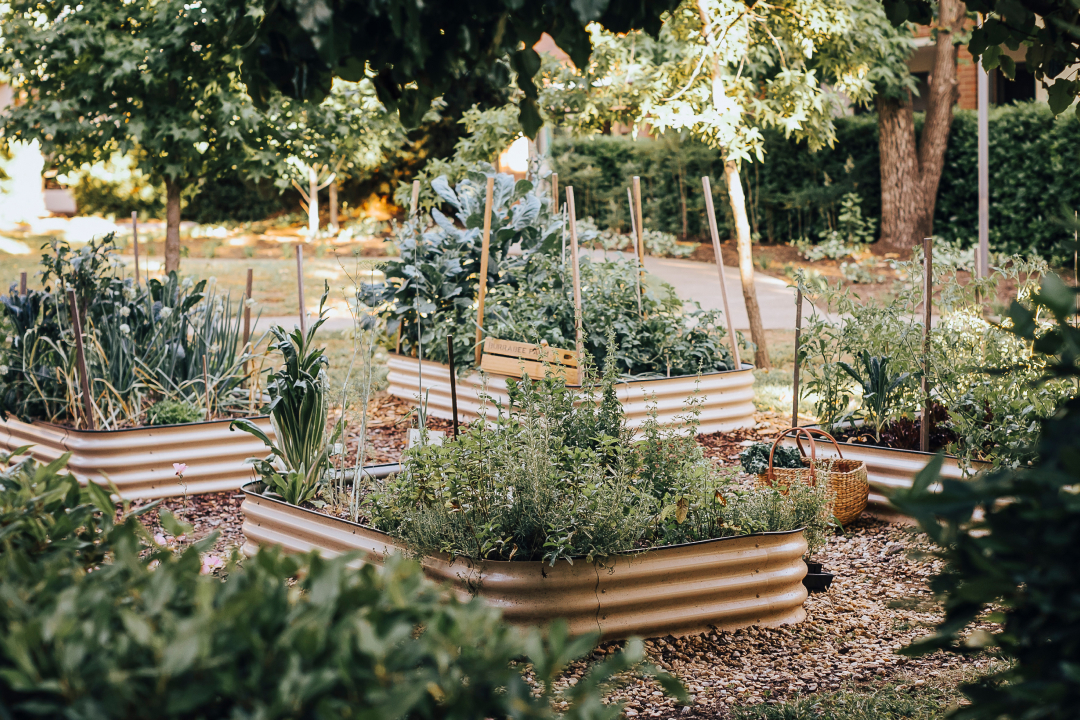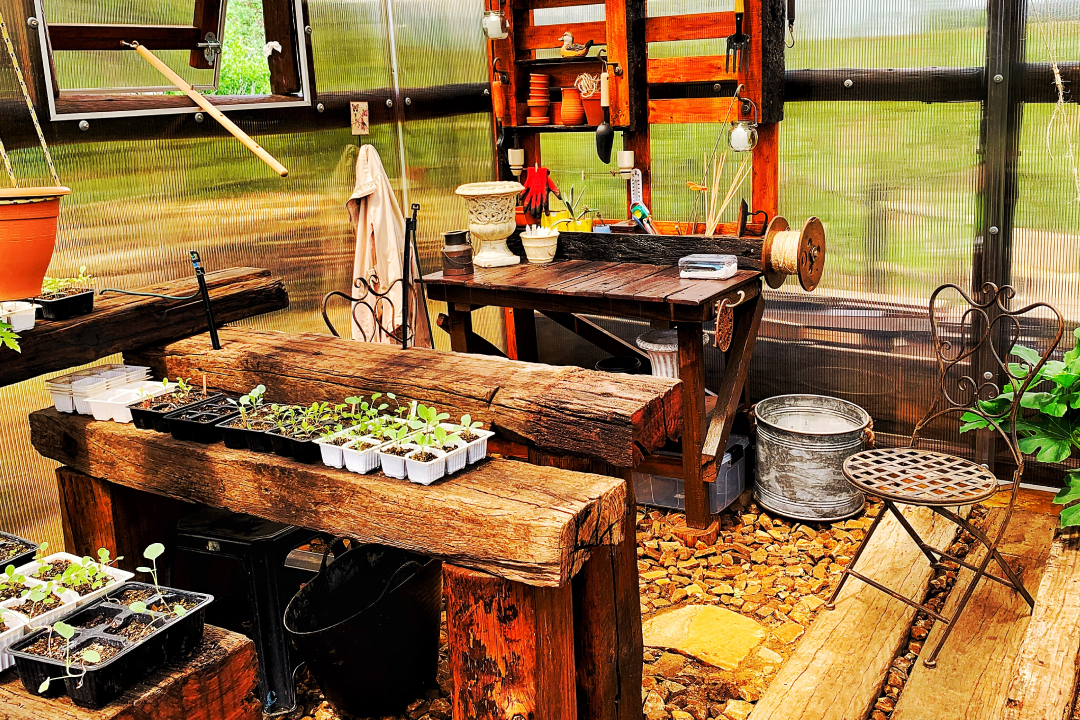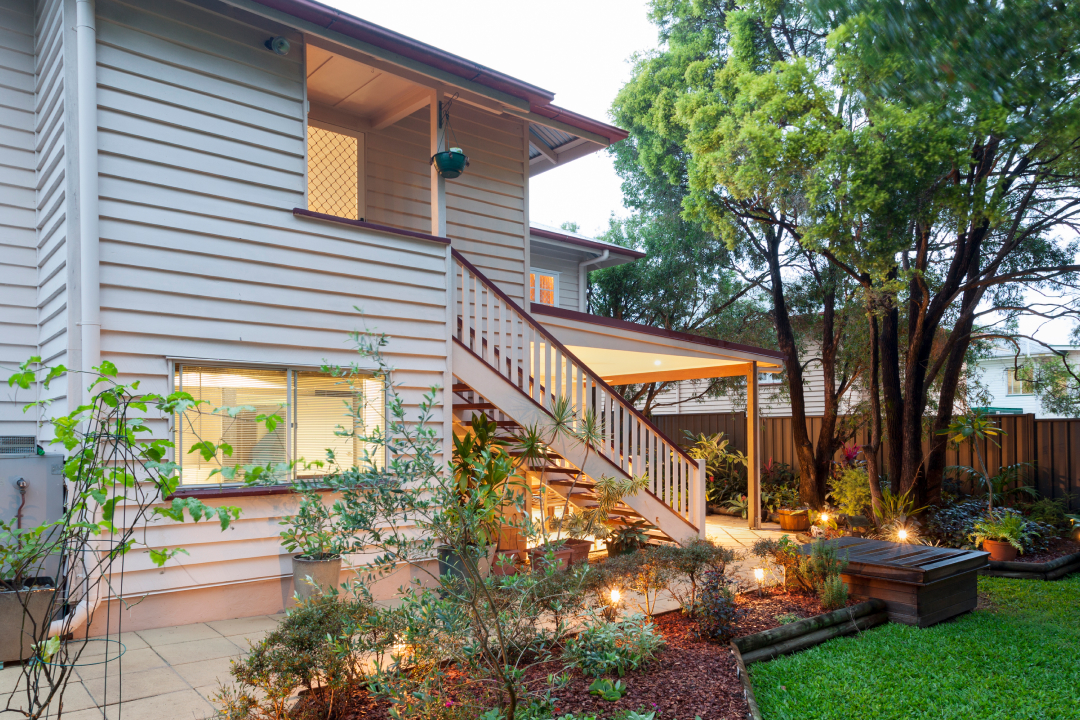As climate change concerns grow, people are increasingly interested in sustainable ways to live, grow food, and interact with nature. Here at Live More With Less our garden is based on permaculture principles but what exactly is permaculture, and why did we choose it?
Defining Permaculture
At its core, permaculture is a philosophy and approach to sustainable living and land management. The term comes from “permanent agriculture” and “permanent culture,” meaning its about creating long-lasting, self-sustaining systems that benefit both people and the environment. Developed in the 1970s by Bill Mollison and David Holmgren in Australia, permaculture combines elements from organic farming, sustainable architecture, ecology, and indigenous practices to create a holistic approach to how we live and grow food.
Rather than relying on industrial agricultural methods that deplete soil and require synthetic inputs, permaculture focuses on working with nature instead of against it. This means designing ecosystems that are regenerative, diverse, and resilient.
Permaculture Principles
Permaculture operates on a set of principles that guide how we design and manage systems for maximum sustainability and minimum waste. Here are some of the key principles:
- Observe and Interact: Pay close attention to the environment and learn from natural patterns before taking action. This helps us understand how to design systems that fit harmoniously into their surroundings.
- Catch and Store Energy: In permaculture, energy is any resource that can be captured and reused. This includes sunlight, rainwater, and organic material. For example, rainwater catchment systems or solar panels can help store energy for later use.
- Produce No Waste: Everything has a purpose. Organic waste, for example, can be composted and returned to the soil to improve fertility. This minimises the amount of waste that would otherwise go to a landfill.
- Use Small and Slow Solutions: Permaculture encourages starting small and observing the impacts of each decision, avoiding quick-fix approaches that might cause harm in the long run.
- Use and Value Diversity: Diverse ecosystems are more resilient and less prone to pests and diseases. A permaculture garden might include a mix of plants, animals, and insects to create a balanced system.
- Integrate Rather Than Segregate: By placing plants, animals, and structures thoughtfully, they can support each other. For example, chickens can be used to control pests and fertilise the soil.
- Use Edges and Value the Marginal: Nature often thrives in the “edges” where different ecosystems meet, like the edge between a forest and a field. These areas can be especially productive and are valued in permaculture.
Permaculture Techniques and Design Elements
Permaculture gardens and systems often look different from conventional farms and gardens. Here are a few common techniques and features:
- Food Forests: In a food forest, layers of plants are designed to mimic a natural forest, with canopy trees, shrubs, ground cover, and roots. This creates a low-maintenance system that produces a variety of foods, like fruits, nuts, herbs, and vegetables.
- Companion Planting: Certain plants benefit each other when grown together. For instance, planting basil with tomatoes can deter pests and improve flavour. Companion planting helps reduce the need for pesticides and promotes biodiversity.
- Rainwater Harvesting: Collecting and storing rainwater reduces reliance on town water supplies. Creating swales or shallow ditches can also direct rainwater to where its needed most – towards thirsty plants.
- Composting: Composting turns organic waste into valuable soil, reducing waste and improving soil health. Many permaculture systems include compost bins or worm farms to recycle kitchen scraps and yard waste.
- Natural Building: Structures in permaculture are often made with natural, sustainable materials, like straw bales, cob (a mix of clay, sand, and straw), or reclaimed wood. These materials often have lower environmental impacts and keep buildings well-insulated.
Why Choose Permaculture?
People are drawn to permaculture for various reasons, including its low impact on the environment, potential to produce healthy food, and ability to create resilient systems. Here are some specific benefits:
- Environmental Health: Permaculture reduces the need for synthetic fertilisers and pesticides, which can harm soil, water, and local wildlife. This promotes healthier ecosystems and cleaner water sources.
- Soil Regeneration: Conventional farming can degrade soil, but permaculture practices like mulching and composting improve soil structure, retain moisture, and support microorganisms essential for plant health.
- Food Security: A permaculture garden can provide a reliable source of fresh, nutritious food, reducing dependence on supermarkets and long-distance food supply chains.
- Community Building: Permaculture often involves collaboration, sharing resources, and teaching others about sustainable practices, fostering a strong sense of community.
- Resilience to Climate Change: With its focus on biodiversity, permaculture creates systems that are better able to withstand extreme weather, droughts, and pests.
Starting Your Own Permaculture Journey
You don’t need a large property or an agricultural background to get started with permaculture. Even a small garden, balcony, or community space can benefit from permaculture principles. Begin by observing your surroundings, choosing diverse plants, and considering small changes you can make, like composting or planting drought-resistant plants.
Permaculture offers a practical and hopeful way forward for anyone interested in living sustainably and creating positive change. With a little patience and creativity, we can all learn to live a bit more like nature—balanced, efficient, and endlessly renewable.
If you’d like more details on any of these principles or techniques, or have questions on starting your own permaculture setup, feel free to reach out!




